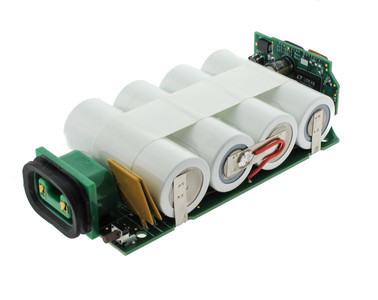By Ed McMahon, CEO – Epec Engineered Technologies
When you evaluate and examine the true stresses that lithium batteries encounter, most battery packs are designed to last three to five years if used and stored properly. Environmental conditions, not just charge cycling, are the key ingredients to longevity. The worst situation is keeping a fully charged battery at elevated temperatures. When not in use, batteries must be stored in a cool place. Most manufacturers will recommend storing at a 40% charge and being outside of the device it is used in. This allows for some self-discharge while still retaining sufficient charge to keep the protection circuit active. Elevated temperatures and allowing the battery to sit at the maximum charge voltage for extended periods of time, is the most common reason for shorter than expected battery life. Additional stresses can even lead and nickel-based batteries.
Test data confirms that the best storage option of lithium batteries is if the cell is partially discharged. In one test by Cadex Electronics (http://www.buchmann.ca ) after 1 year in storage at 25°C the non-recoverable capacity remaining is 96%, when stored at 40% initial charge level, but only 80% if stored with 100% initial charge level. This effect is reduced at lower temperature and is a non-issue at 0°C but at higher temperatures the effect is much worse.
If secondary cells or battery packs must be stored for a prolonged period the state of charge should be checked regularly and provision should be made for recharging the cells before the cell voltage drops below the recommended minimum after which the cells suffer irreparable deterioration. (This is particularly true for battery packs which may have associated electronics which add to the self-discharge drain on the cells)
Lithium-ion chemistry prefers partial discharge and since lithium-ion chemistry does not have a "memory", you do not harm the battery pack with a partial discharge. If the voltage of a lithium-ion cell drops below a certain level, it cannot be recovered. This is also part of the reason that you want to use fuel gauge technology on all battery packs so that you can actively measure capacity and extend the life of the battery pack.
Also Lithium-ion batteries age, even if they are sitting on a shelf unused, and this capacity decrease is irreversible. So do not "avoid using" the battery with the thought that the battery pack will last five years. It won't. Also, if you are buying a new battery pack, you want to make sure it really is new. If it has been sitting on a shelf in the store for a year, it won't last very long. Manufacturing dates are important.
Interested in learning more? Check out the full battery pack development timeline.
When you evaluate and examine the true stresses that lithium batteries encounter, most battery packs are designed to last three to five years if used and stored properly. Environmental conditions, not just charge cycling, are the key ingredients to longevity. The worst situation is keeping a fully charged battery at elevated temperatures. When not in use, batteries must be stored in a cool place. Most manufacturers will recommend storing at a 40% charge and being outside of the device it is used in. This allows for some self-discharge while still retaining sufficient charge to keep the protection circuit active. Elevated temperatures and allowing the battery to sit at the maximum charge voltage for extended periods of time, is the most common reason for shorter than expected battery life. Additional stresses can even lead and nickel-based batteries.
Test data confirms that the best storage option of lithium batteries is if the cell is partially discharged. In one test by Cadex Electronics (http://www.buchmann.ca ) after 1 year in storage at 25°C the non-recoverable capacity remaining is 96%, when stored at 40% initial charge level, but only 80% if stored with 100% initial charge level. This effect is reduced at lower temperature and is a non-issue at 0°C but at higher temperatures the effect is much worse.
 |
| Lithium-ion Battery Pack with Sophisticated Control and Monitoring Electronics |
If secondary cells or battery packs must be stored for a prolonged period the state of charge should be checked regularly and provision should be made for recharging the cells before the cell voltage drops below the recommended minimum after which the cells suffer irreparable deterioration. (This is particularly true for battery packs which may have associated electronics which add to the self-discharge drain on the cells)
Lithium-ion chemistry prefers partial discharge and since lithium-ion chemistry does not have a "memory", you do not harm the battery pack with a partial discharge. If the voltage of a lithium-ion cell drops below a certain level, it cannot be recovered. This is also part of the reason that you want to use fuel gauge technology on all battery packs so that you can actively measure capacity and extend the life of the battery pack.
Also Lithium-ion batteries age, even if they are sitting on a shelf unused, and this capacity decrease is irreversible. So do not "avoid using" the battery with the thought that the battery pack will last five years. It won't. Also, if you are buying a new battery pack, you want to make sure it really is new. If it has been sitting on a shelf in the store for a year, it won't last very long. Manufacturing dates are important.
Interested in learning more? Check out the full battery pack development timeline.